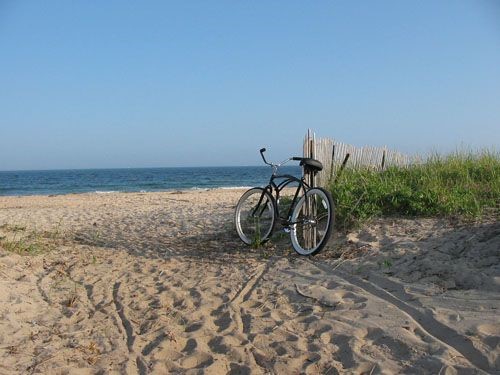That was the lament of Samuel Taylor Coleridge’s Ancient Mariner, but it is also sometimes…

Getting a Dock In Rhode Island May Be Harder Than You Think
One of the attractions in acquiring waterfront property is to have a boat dock for recreational activities. That may, however, be easier said than done.
For example, if a prospective purchaser is buying a waterfront parcel with the intention of enjoying a dock, due diligence is required. If the property is located on tidal waters (i.e. waters subject to the ebb and flow of the tide), it is under the jurisdiction of the Rhode Island Coastal Resources Management Council (“CRMC”). CRMC has rules governing tidal waters, and the land which bounds on tidal waters. Lots of rules.
The basic rules are published in what is known as the “Red Book”, which is a moniker derived from the distinctive red cover of the rule book. But don’t look to a paper book, look to the digital version, available on CRMC’s website, at www.crmc.ri.gov. The reason is that not only are there a lot of rules, but the rules change so frequently that the only way you know you are dealing with the current rules is to go online to view them.
And while you are at it, pay attention to the myriad of other regulations which may be applicable to your property, including the special area management plans, or SAMPS, which cover different areas throughout the state. These include plans for the Metro Bay, Greenwich Bay, Aquidneck Island West Side, Pawcatuck River, Narrow River, Salt Ponds Region, etc.
CRMC classifies waters into different classes or types, ranging from Type 1 to Type 6, with Type 1 being the most pristine, and therefore, the most protected.
If the property you are interested in purchasing borders Type 1 waters, you are highly unlikely to get a dock if it does not currently have one. They are prohibited on Type 1 waters. This means that in order to get a dock, you must meet the standards for issuance of a special exception, which are extraordinary difficult, if not impossible, to meet in the case of a dock for private use by a private property owner. The reason is that to get a special exception you must demonstrate, inter alia, the activity “serves a compelling public interest which provides benefits to the public as a whole as opposed to individual or private interests”.
Now assume you are considering purchasing property, and it has a dock. Are you home free? Not by a long shot.
First, you must check CRMC records to see if there is an Assent, which is a CRMC permit, for the dock. If there is, and the dock is in compliance with the Assent, you should be fine.
But if CRMC records show a 20 foot dock, and the property in question now has a 60 foot dock, you may be looking at an illegal dock.
Another scenario is that a dock could be “grandfathered” pursuant to state legislation which established a procedure to authorize docks which were built before the establishment of CRMC in 1971. However, the window for this statutory grandfathering was between 1994 and 1999. If such status was granted, it should be reflected in CRMC records.
If such statutory grandfathering was not established, the other alternative is application to the Army Corps of Engineers for a grandfather determination, which CRMC should honor.
Consider the case of the Harris Marina in East Greenwich, Rhode Island. Michael M. Tikonian v. Kenneth W. Harris, KC-11-0335 (Sup. Ct. July 8, 2011). Mr. Harris operated a marina in East Greenwich since 1979, serving well over 20 boats. However, he had no Assent from the CRMC, he did not apply for or receive statutory grandfather status between 1994 and 1999, and he did not have, nor apparently could he obtain, grandfather status from the Army Corps of Engineers.
Accordingly, the CRMC ordered him to remove his docks, and the Superior Court upheld that order.
Lesson learned: even though the property in question may have a dock in use, perhaps for years, it may not have legal status and could be subject to court-enforced removal.
And be aware that if the dock issue arises on a riverfront property, you also may have the same issues with CRMC, as portions of rivers near the coast may well be subject to the ebb and flow of the tide, and therefore under CRMC jurisdiction.
And not to complicate this further, but if the real estate parcel at issue is located on a lake and ownership of the parcel to be purchased does not extend below the waterline, you may face difficulties with regard to a dock.
Under these circumstances, if there is already a dock in place, even though the property owner does not own the lake bottom on which the dock sits, the state regulator, the Department of Environmental Management (“DEM”), likely will allow repair and maintenance of the existing dock. However, if there is no dock and the parcel owner wants to construct a dock, DEM likely will not issue a permit for a dock, because it insists that the owner of the property on which the dock is to be located (i.e. the lake bottom) must sign the application. So the owner of the lot seeking the dock would need to get the owner of the lake bottom to join in the application. That may or may not be feasible.
And you thought getting a dock in the Ocean State would be easy—please!



